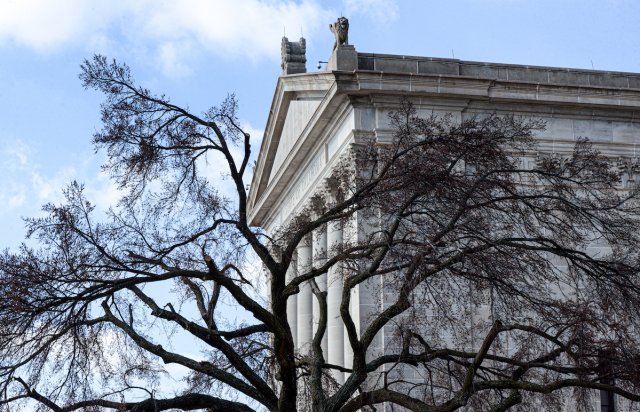

Oklahoma has made remarkable progress to reduce our incarceration rate in recent years. Reforms through the ballot box, reforms by the Legislature and administrative efforts have contributed to a consistent decline in our prison population and a reduction in felony charges across the state.
In 2016, Oklahoma voters approved two of the biggest criminal justice reform measures in state history: SQ 780 and SQ 781. SQ 780 reclassified simple drug possession and many low-level property crimes as misdemeanors rather than felonies, and SQ 781 directed the Legislature to invest the money saved from the resulting incarceration decrease into treatment and rehabilitation. It was a major step in our state’s efforts to address substance abuse and mental health — two root causes of crime — instead of relying on incarceration, which is both costly and counterproductive.
Research from Open Justice Oklahoma, a program of the Oklahoma Policy Institute, found that felony filings dropped by more than 28 percent — more than 14,000 cases — in the first year that SQ 780 was in effect. Prior to the law, around 1,200 people were incarcerated each year for drug possession, the most common controlling offense for people entering prison. As a result of SQ 780, these people are no longer eligible for prison sentences, contributing to a decline of more than 20 percent in the prison population (nearly 6,000 fewer people) when compared to 2015, while property crime rates have also fallen.
Unfortunately, until now, lawmakers have been uncertain about how to accurately measure the savings from 2016’s criminal justice reforms, which has hampered a key component of the measures, aimed to invest in county-level treatment and rehabilitation programs. Now, thanks to justice reform advocates’ work with the Office of Management and Enterprise Services (OMES) and the Department of Corrections (DOC), Oklahoma has a working model to calculate these savings.
As a result, the state can begin investing in county-level services that we need to fulfill the mandates of SQ 781 and continue moving Oklahoma’s criminal justice system from punishment to treatment.
It’s time to follow through on SQ 781
SQ 781 requires OMES to calculate the savings realized by SQ 780 annually and directs the Legislature to deposit that amount of money into the County Community Safety Investment Fund. Counties get a piece of that money each year in proportion to their population.
However, in the three state budgets passed since SQ 780 was enacted, the Legislature has failed to make any deposit at all. The Legislature, understandably, balked at the first SQ 781 calculation, which put the savings at $63.5 million. This year, working with DOC and the Oklahoma Policy Institute, OMES calculated the savings at $10.6 million. The calculation uses actual correctional system admissions and time-served data from the three years prior to estimate when savings occur.
The Legislature’s failure to follow SQ 781’s requirements, which were approved by voters with a large statewide majority, has hampered Oklahoma’s justice reform process. The idea behind SQ 780 and SQ 781 was to save money by reducing the incarceration rate and to invest those savings into front-end services that address the root causes of crime. SQ 780 has prevented courts from sending low-level drug and property offenders to state-run prisons, forcing judges and prosecutors to find alternatives at the local level. SQ 781 was put in place to offer resources to those local systems to fund substance abuse and mental health treatment.
Since SQ 780 passed, property crime rates have remained near historic lows, and there has not been a systemic increase in crime as Oklahoma reduces punishments. However, mental health and substance abuse remain far too widespread, and treatment is out of reach for many Oklahomans who need it.
Now that elected officials and policymakers have a working formula to calculate justice reform savings, it’s time for the Oklahoma Legislature to live up to SQ 781’s mandate and fund county-level services that can break cycles of addiction. It is a necessary, long-overdue investment in the wellbeing and safety of Oklahomans.




















